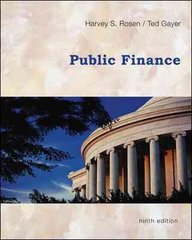Question
Abbott Labs market value plunged more than $5 billion or 6% in a single day following the announcement of the firms acquisition of St. Jude
Abbott Labs market value plunged more than $5 billion or 6% in a single day following the announcement of the firms acquisition of St. Jude Medical (St. Jude) on April 26, 2016, as investors expressed their disapproval. Their concern was that Abbot was overpaying and would be unable to earn financial returns demanded by investors. The $25-billion deal included a $6.5-billion premium, 37% above St. Judes closing price on April 25, 2016. St. Judes shares soared by more than 27% boosting the firms market capitalization to $24.1 billion from its level of $17.59 billion the prior day.
In announcing the transaction, Abbott said the primary motive for the takeover was to expand its heart device business. Abbott, the industry leader in manufacturing coronary stents and heart valves, wanted to combine with St. Jude, a maker of pacemakers and other devices for failing hearts. The aging population makes the failing heart market likely to show considerable growth in the coming years.
Medical equipment makers are under pressure to offer a wider portfolio of products to their hospital customers, which have been through a wave of mergers that have increased their power to negotiate pricing. With combined revenue of $8.7 billion, Abbott said its deal would help it compete more effectively against larger rivals Medtronic Plc, Boston Scientific Corp., and Edward Life Sciences. The combination of Abbott and St. Jude creates a medical device manufacturer with leading positions in high-growth cardiovascular markets, including atrial fibrillation, structural heart, and heart failure, as well as a leading position in the high-growth neuromodulation market. The new firm also will have the largest pipeline (products in development) to deliver a steady stream of new medical devices to these high-growth markets.
The definitive agreement reached by Abbott and St. Jude called for St. Jude shareholders to receive $46.75 in cash and 0.8708 share of Abbott common stock. This represented a total consideration of $85 per share. Abbott expects the deal would be accretive to earnings per share and that the combined firm will earn double-digit financial returns within 5 years. Management expects annual pretax cost savings of $500 million to begin within 5 years following closing. For the firm to earn the returns promised by management, it must be able to realize expected annual pretax cost savings beginning in 2020. Failure to realize these expected savings in a timely manner can impact significantly synergy value. Also, it is unclear if the full cost of realizing these synergies has been deducted from the projected savings.
One way of determining if Abbott is overpaying is to estimate St. Judes stand-alone value plus the PV of anticipated synergy. This estimate represents the upper limit (maximum) for the amount Abbott should pay for St. Jude and still be able to earn its cost of capital. Any payment in excess of the maximum purchase price means that Abbott is destroying shareholder value by in effect transferring more value than would be created to the target firm shareholders.
Table 8.5 provides data enabling an analyst to value St. Jude on a stand-alone basis using the comparable company method. Note that the table contains valuation multiples for St. Judes three primary competitors as well as earnings, revenue, book value, and enterprise value per share for St. Jude. The choice of valuation multiples is subjective in that it is unclear which best mirror the stand-alone value of St. Judes. Abnormally low interest rates at the time of the merger announcement could have resulted in artificially high valuation multiples. Also, the competitors selected are larger and more diversified than St. Judes and their growth rates and profitability tend to be greater while the riskiness of their cash flows tends to be less.
| Table 8.5 |
|
|
|
|
|
|
| Forward P/E | Price/Revenue | Price/Book | EV to EBITDA | EV to Revenue |
| Primary Competitors |
|
|
|
|
|
| Medtronic (ratio) | 16.14 | 4.17 | 2.32 | 15.19 | 4.69 |
| Boston Scientific (ratio) | 18.04 | 4.1 | 4.82 | 18.41 | 4.7 |
| Edward Life Sciences (ratio) | 29.28 | 4.87 | 9.13 | 26.77 | 4.99 |
| Average | 21.15 | 4.38 | 5.42 | 20.12 | 4.79 |
| St. Jude Medical ($/share) | 1.06 | 5.54 | 4.04 | 1.12 | 5.54 |
| St. Jude Medical (market price) | 22.42 | 24.27 | 21.91 | 22.54 | 26.56 |
| Average | 23.54 |
|
|
|
|
7. What is the maximum amount Abbott Labs could have paid for St. Jude Medical and still earned its cost of capital? Did Abbott overpay for St. Jude based on the information given in the case? Explain your answer. [Hint: Use your answers to questions (1) and (5).]
Please assist with question #7. (Answer to #1 is $23.54 and answer to #5 is $3,000-million)
Step by Step Solution
There are 3 Steps involved in it
Step: 1

Get Instant Access to Expert-Tailored Solutions
See step-by-step solutions with expert insights and AI powered tools for academic success
Step: 2

Step: 3

Ace Your Homework with AI
Get the answers you need in no time with our AI-driven, step-by-step assistance
Get Started


